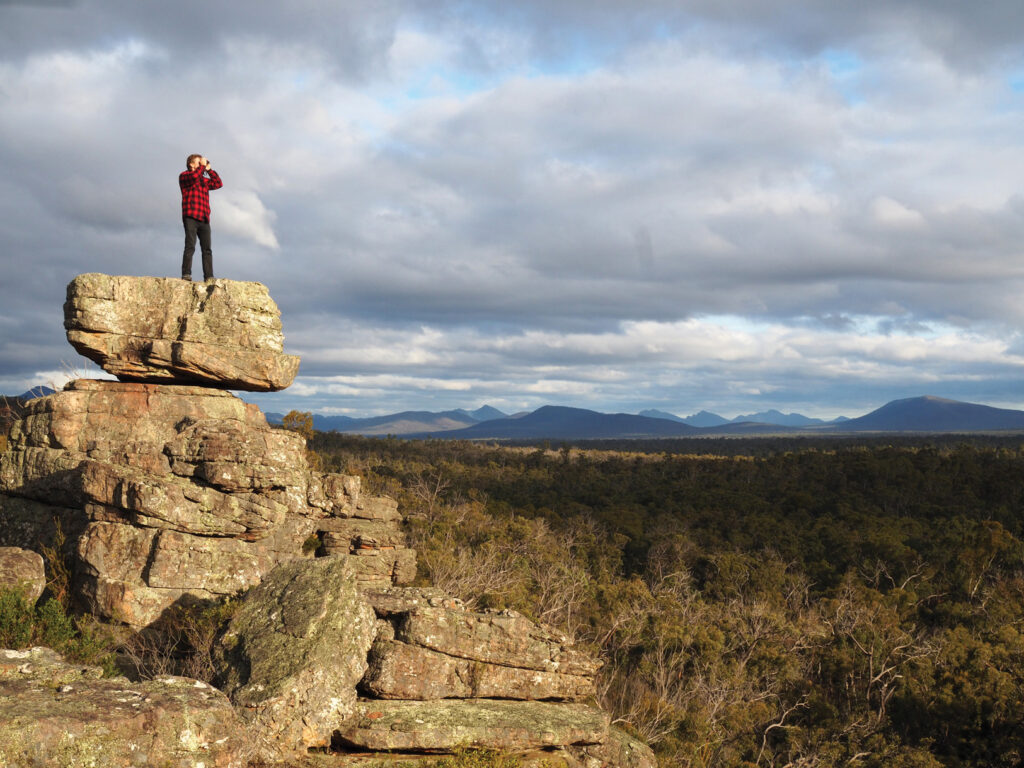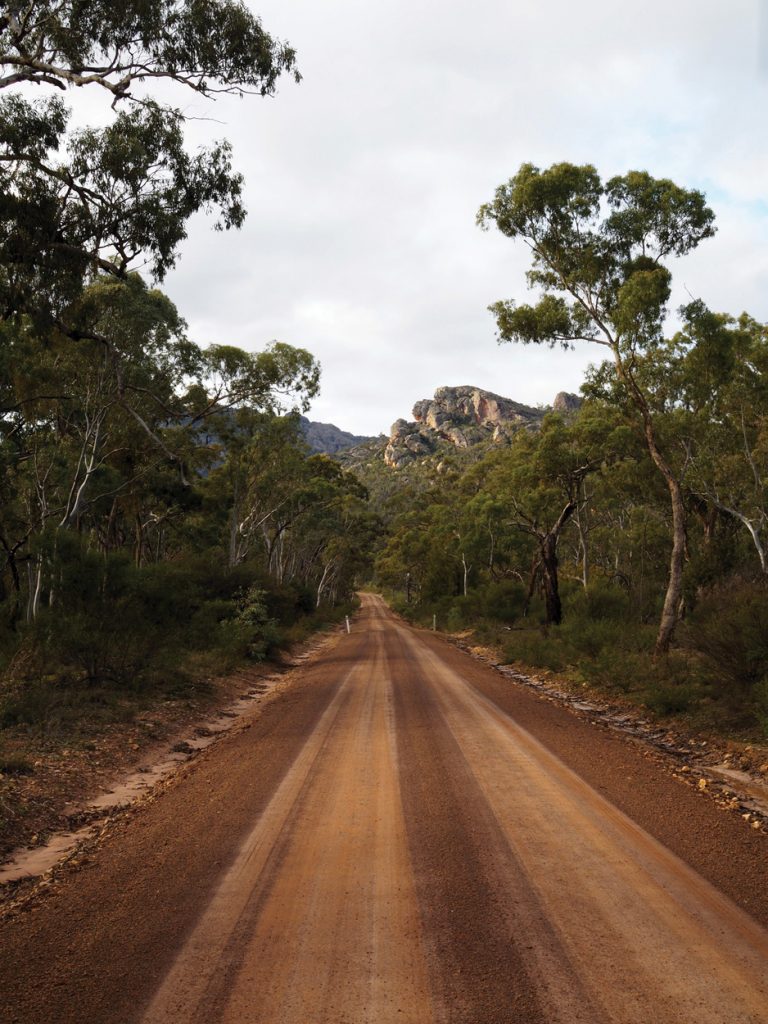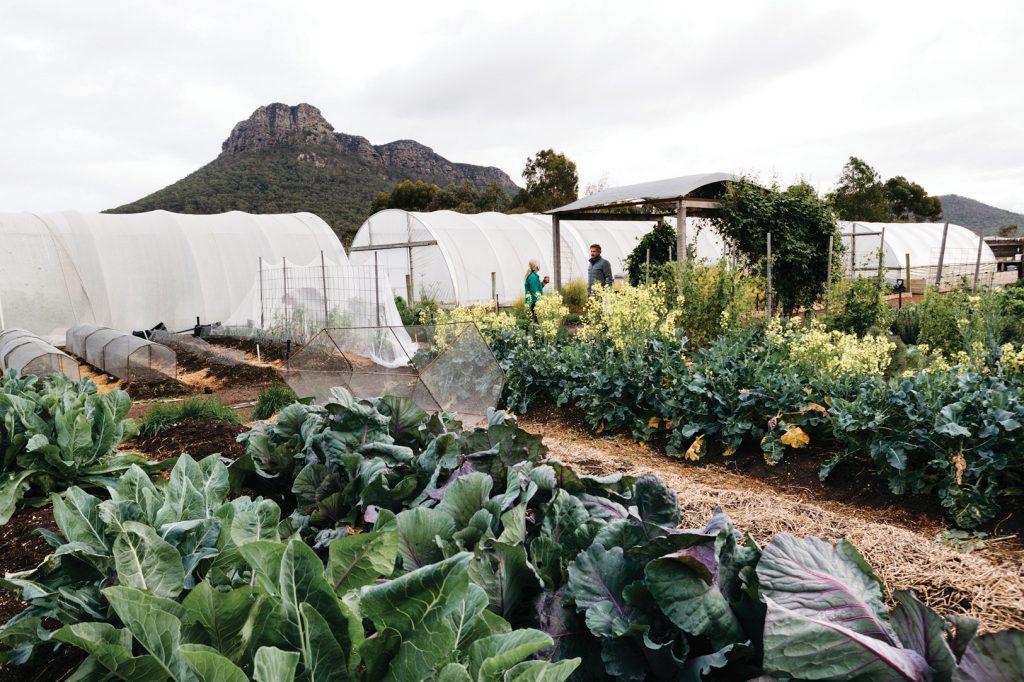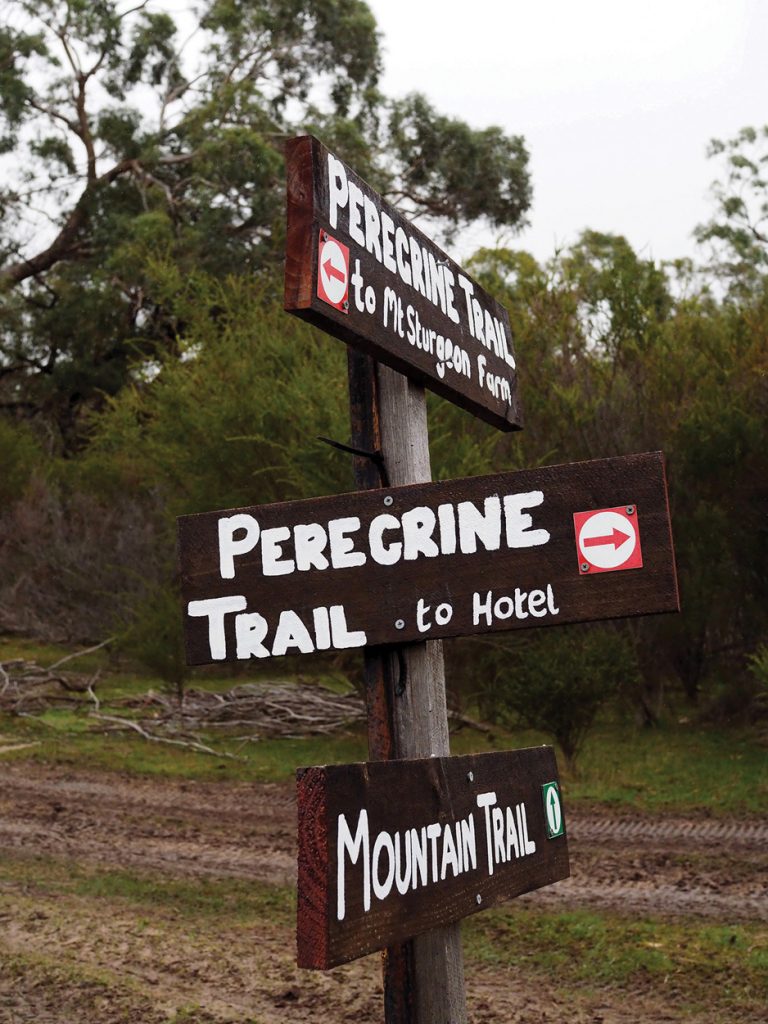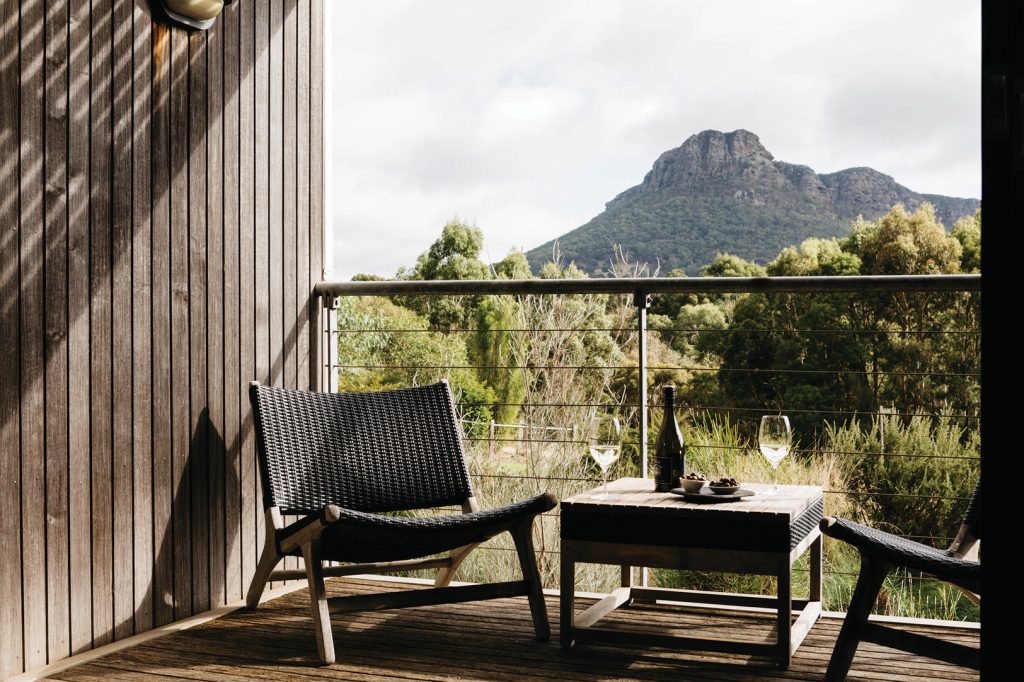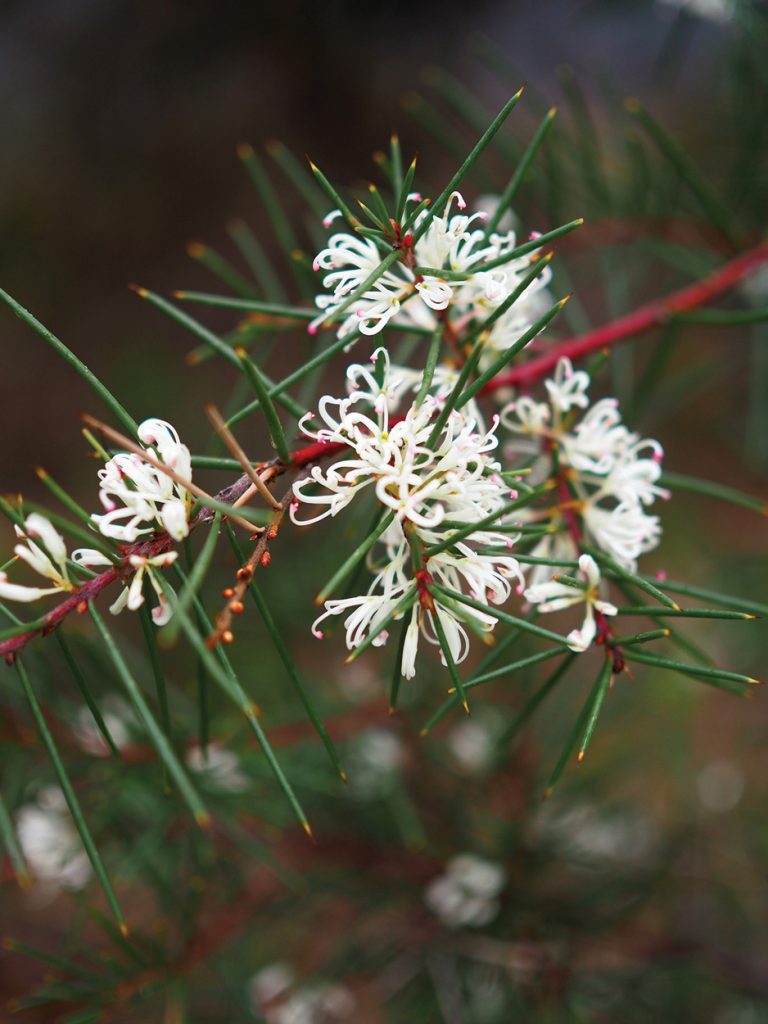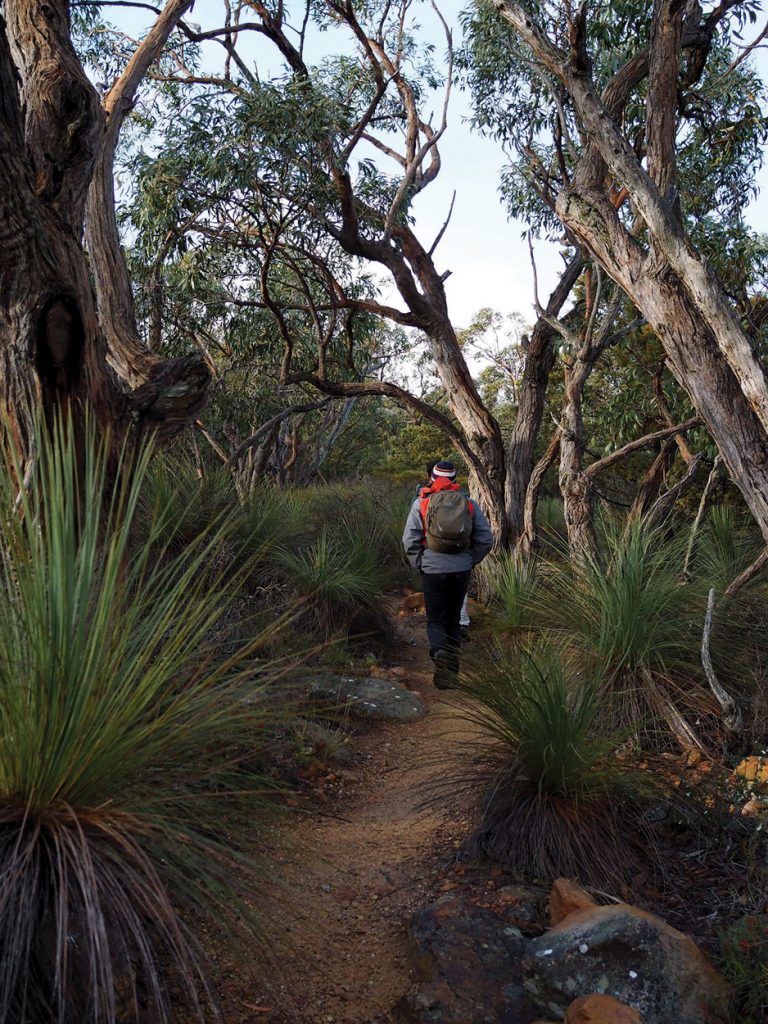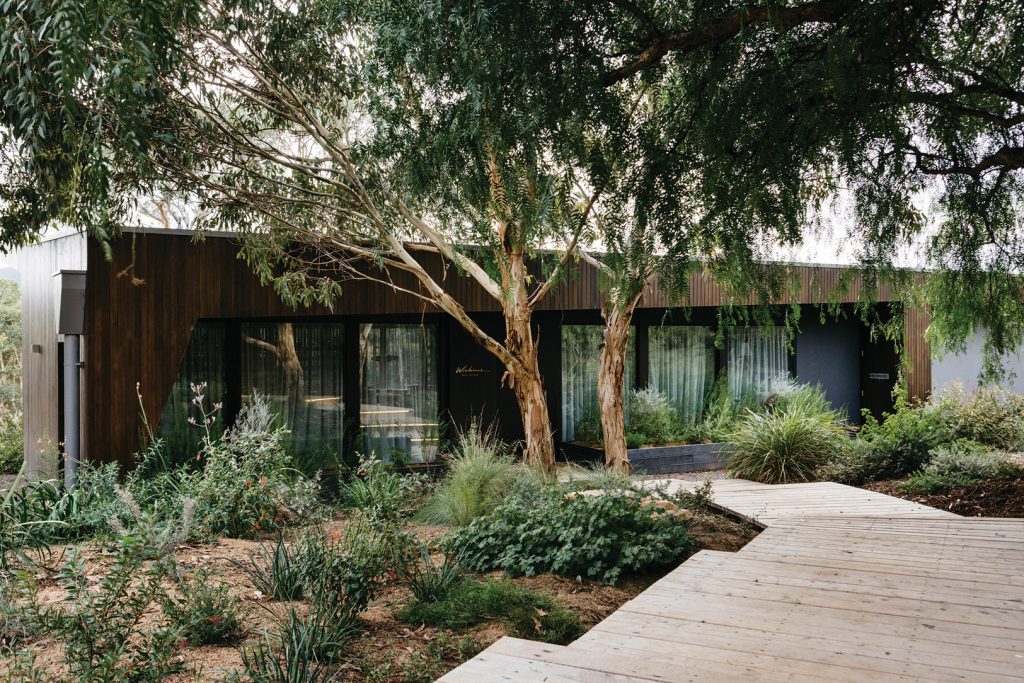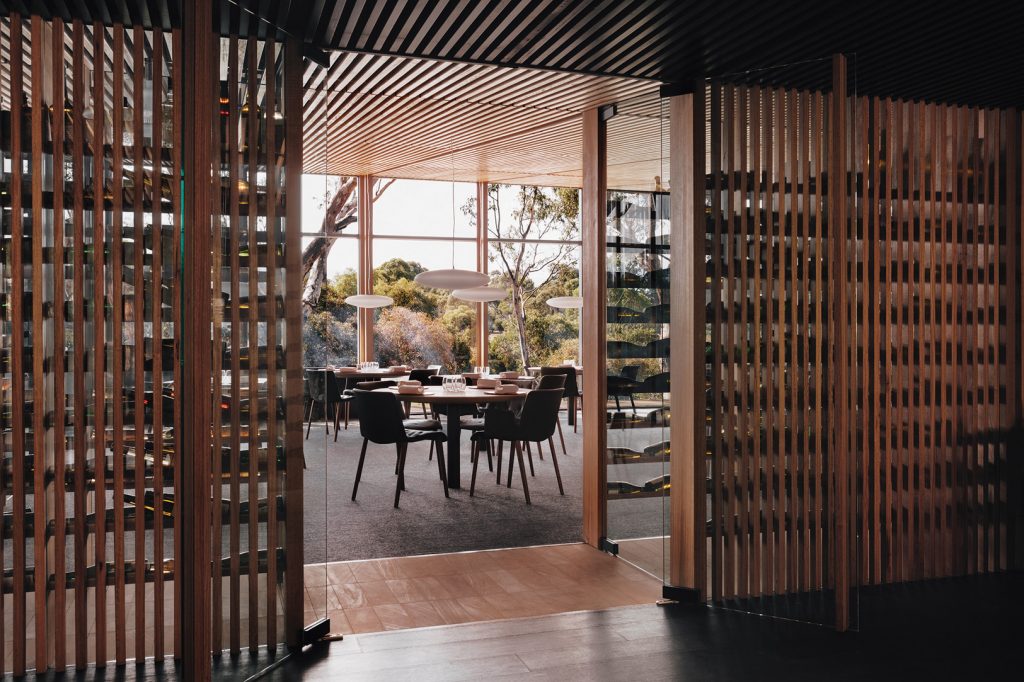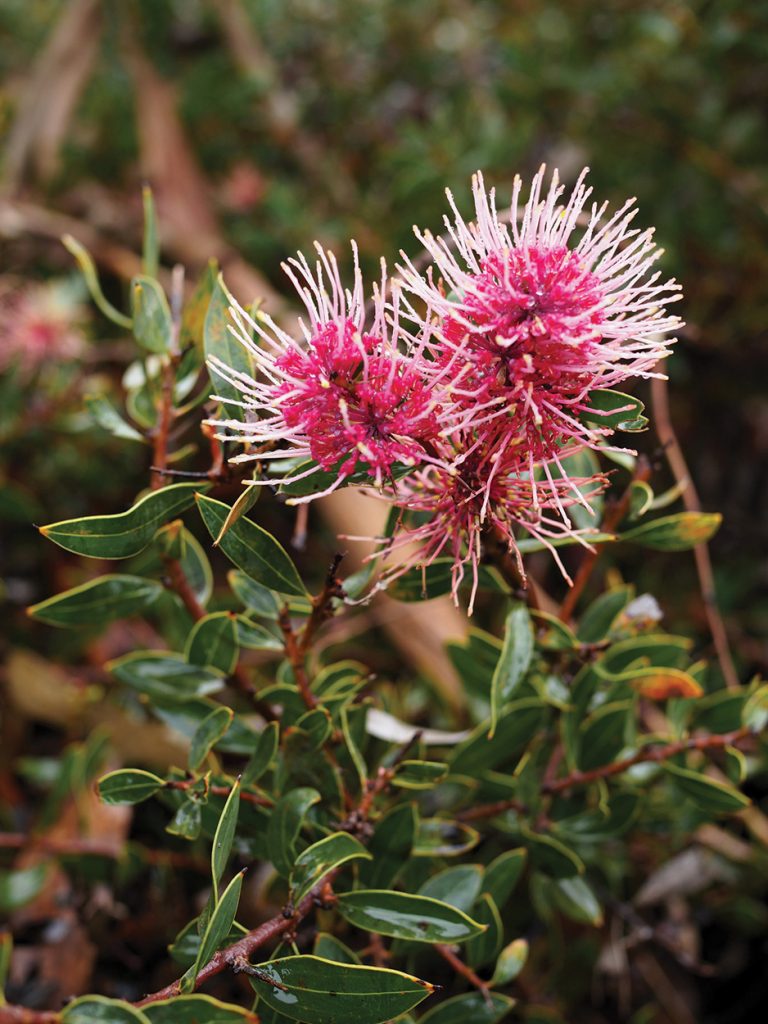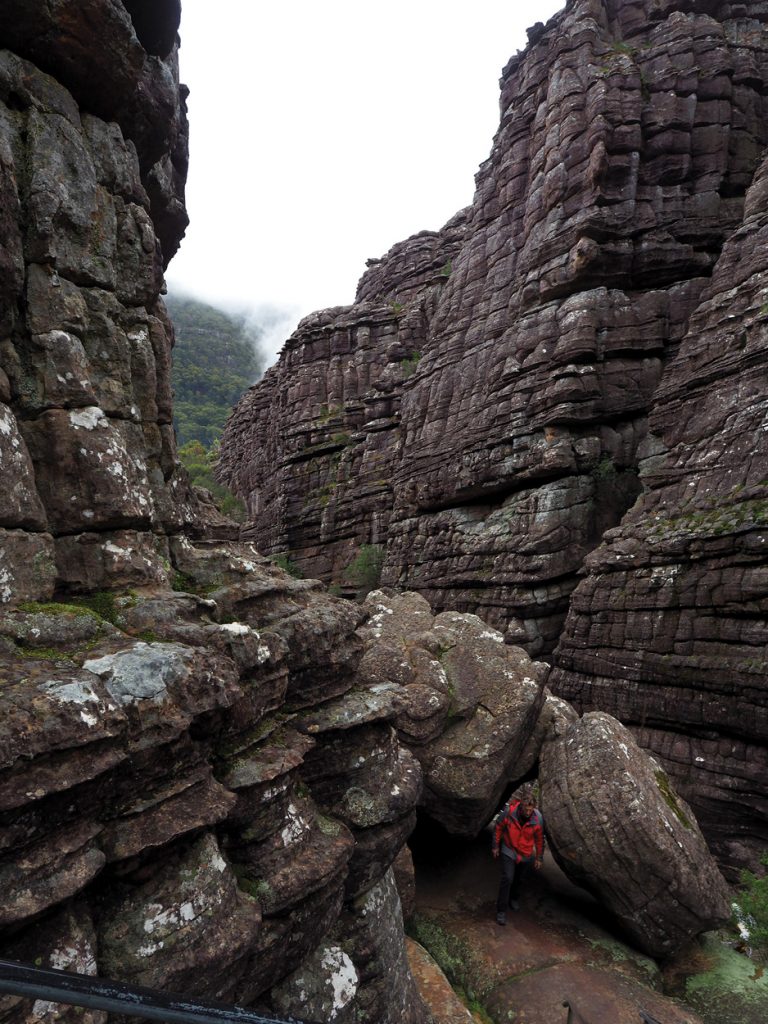Interest Peaked
The Southern Grampians offer a dynamic landscape for hiking and the iconic Royal Mail Hotel at the foot of the range is a welcoming gourmet destination.
Since time immemorial, Gariwerd (or more recently the Grampians) has held people in its awe with majestic sandstone escarpments dominating the horizon on approach. The main northsouth ranges create their own climatic conditions with orographic uplift that determines the endemic flora and fauna and the produce that can be harvested.
The Southern Grampians region surrounded by the great basalt plain of western Victoria offers a bounty of local produce, treks and expansive views. The owners of Dunkeld’s Royal Mail Hotel have been instrumental in ensuring the extended Grampians Peaks Trail will reach all the way to the regional town. Hikers will be able to tackle a 13-day trek across the ranges and vast valleys from the trail-head near Halls Gap via epic views and local watercourses, all the way to Dunkeld. The southern portion of the trail will lead to the summit of Mt Abrupt before crossing the saddle to The Piccaninny, providing sweeping vistas of the Victoria Valley. The final stage takes you through Royal Mail Hotel property into town.
From the Royal Mail Hotel, the Woodlands Wander is a self guided two-kilometre return loop walk on the company’s Mt Sturgeon property and has interpretative signage along the way, explaining this conservation zone and the revegetation activities. Half-day walks deliver rewarding sights from the nearby peaks with heaths, hakeas, grasstrees and banksia prolific amongst the messmate scrub of the lower hills. It’s easy to observe a range of wrens and honeyeaters. Atop the ridges shy black wallabies forage whilst wedge-tailed eagles circle above. Below in the river valleys mobs of eastern grey roos abound.
A day exploring is justly rewarded with a degustation treat at Wickens at Royal Mail Hotel, an internationally-renowned twohatted restaurant. All the vegetables, fruit and herbs are sourced from the restaurant’s impressive kitchen garden. This 1.2-hectare plot at the base of Mt Sturgeon includes several greenhouses, rows of garden beds and an adjacent orchard. During a tour in midwinter we observe broccoli, brussels sprouts, fennel, celeriac and garlic and an assortment of less conventional herbs and vegetables. Our sous-chef guide relishes the challenge of assisting in creating a hearty winter menu from the available harvest. As he described the upcoming vernal crops, a notable spring rose in his step as he envisaged the new season’s menu. The executive chef Robin Wickens coordinates closely with the head gardener to plan the new season crops. Beyond the garden, the restaurant staff forage for feijoa in nearby Hamilton, mushrooms from local pine plantations and stinging nettles.
The on-site accommodation at the Royal Mail is reminiscent of the classic Australian motel – albeit in a natural setting of native grasses and succulents. The simple, stylish rooms offer spectacular vignettes of Mt Sturgeon, a mere three kilometres to the north. The hotel has a swathe of environmental features including 40kW of PV solar, food waste composting, passive solar design in the architecture and Tesla charging stations. The grounds of the Royal Mail were designed to be drought tolerant by renowned landscape architect, Paul Thompson and are covered in indigenous plants. The highlight is the approach to Wickens at Royal Mail Hotel down a stepped boardwalk through a grove of blue gums and native shrubs and grasses. The elegant, standalone fine dining restaurant is designed by Byrne Architects and the open kitchen is set like a stage for guests to observe the staff preparing various courses. Local materials are prolific, with sandstone used in the floor and wall tiles and the dining tables crafted from 50-millimetre sandstone by local stonemasons. Blackbutt is crafted into a walkway of wine shelves and also used for structural posts and beams.
There are fascinating 4WD ECO-Certified tours provided by the Royal Mail. We headed deep into the valleys and climbed low outcrops to gaze at the ring of ranges lit by the winter sun. Below Ordovician sandstone overhangs we were shown ancient paintings of motifs. Gariwerd has over 80 per cent of Victoria’s rock art. These paintings of ochre and kaolin clay are by the Jardwadjali people who lived on the plains to the north and west for over 20 000 years. Crouching below the ledge, one can only wonder what inspiring culture and knowledge of the land has been lost.
As you head north towards Halls Gap you can explore numerous waterfalls. There is something hypnotic about these cascading streams set amongst towering sandstone cathedrals. The hardy messmates typically give way to monumental river redgums and the bird life becomes more populous. The air was pungent with eucalypt aroma and vibrated through a sea of mist and shimmering winter light.
This wild region of peaks, ravines and valleys offers an enlightening tour for all seasons. A spring visit provides a kaleidoscope of colour as each passing week sees new heaths bursting into flower. By autumn the local food producers are delivering a bountiful harvest. And for the savvy and well-prepared, the winter National Park is transformed with verdant greens of the valley grasslands, and mosses and lichens covering the forest floor. The Grampians deliver a rich experience at any time of the year.
